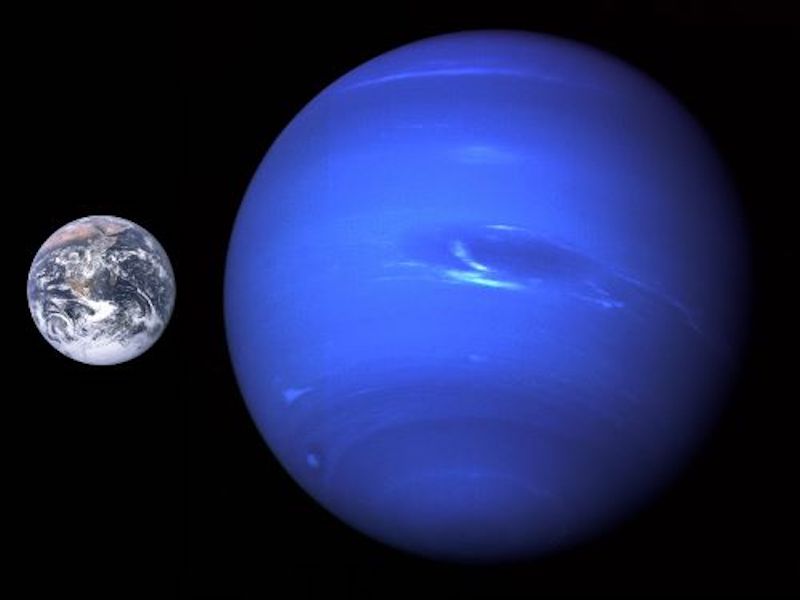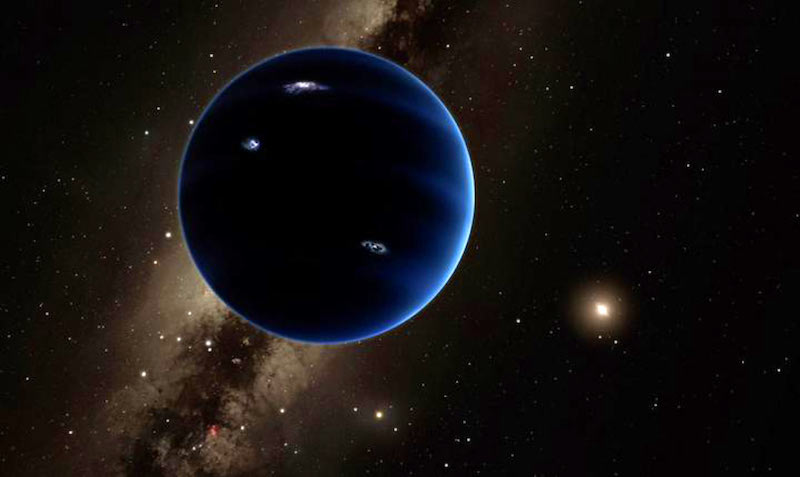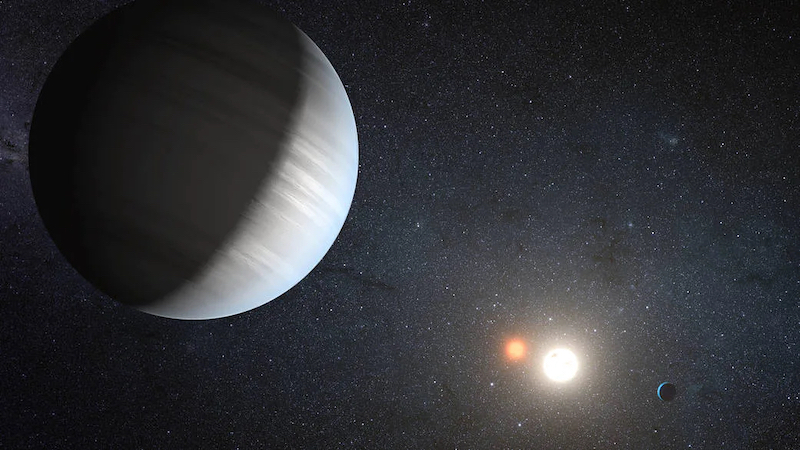
Super-Earth, mini-Neptune or sub-Neptune
Some of the most commonly known exoplanets – worlds orbiting distant stars – are those larger than Earth, but smaller than Neptune. That sounds simple enough, but nature isn’t always so neat and tidy. Astronomers use a variety of terms – super-Earth, mini-Neptune and sub-Neptune – for worlds that fall between Earth and Neptune in size and/or mass. The terms get swapped around, and sometimes used interchangeably, by different astronomers and astronomy writers. What do these words mean exactly?
One caveat. Exoplanet research is new. It’s only been since the early 1990s that astronomers could see and study distant planets at all. That’s even though our Milky Way galaxy likely contains billions of exoplanets. So astronomers themselves don’t always use these terms to mean the same things. It’s as though they’re explorers, standing on the shore of a vast ocean, with a billion uncharted islands before them. Each island-world is different … as different as snowflakes.
How can we make sense of these terms. Can we list some similarities between super-Earths, mini-Neptune and sub-Neptunes? And can we list some differences?
Yes.
Planetary scientist Renyu Hu at NASA’s Jet Propulsion Laboratory has expertise in modeling the physical and chemical processes that shape the atmospheres of planets and exoplanets. He’s lead author of a recent paper about what his team called sub-Neptunes. The paper addressed a population of exoplanets in a specific radius range. Hu told EarthSky in an email:
Indeed, the terms mini-Neptune, sub-Neptune, super-Earth can sometimes be very confusing. We did not use the term ‘super-Earths’ in this paper, because this term might imply a scaled-up version of Earth, not just in mass/radius but also in the planetary composition (i.e., massive mantle and crust and a thin layer of ocean).
[Our] paper mostly addresses planets in the 1.7-3.5 Earth-radii range. From the exoplanet survey of Kepler and many follow-up observations, we now know that the 1.7-3.5 Earth radii planets constitute a different planet population from the <1.7-Earth-radii planets.
It’s not just us
Hu continued:
The exoplanet community … has not yet converged on what would be the best name for these 1.7-3.5 Earth radii planets. This is because we do not know what they are made of. They may be rocky planets with massive [hydrogen] atmospheres. Perhaps they could be called super-Earths with extreme/ exotic atmospheres. Some colleagues call them gas dwarfs. They might also be planets with a massive layer of water. So perhaps they could be called ‘ocean planets’ or ‘water worlds.’ Or, they might be planets with a massive layer of water *and* a massive hydrogen (H2) atmosphere, such as Neptune. And thus they could be called ‘mini-Neptunes.’
Hu said he hopes his recent paper will motivate many more observations of exoplanets in this mass range, in the near future.

Super-Earths
Super-Earths are larger than Earth but smaller than Neptune. They’re generally (but not always) between 1.2 and 2 Earth-radii. Super-Earths are defined primarily be their mass, however, not their size. Their composition can vary according to their density. Like mini-Neptunes, some low-density super-Earths could have atmospheres of hydrogen and helium. Higher-density ones could be composed largely of water (water worlds), or have very dense cores with thick extended atmospheres.
Many super-Earths are likely rocky, like the terrestrial planets in our solar system, with enhanced geological activity. They might have even more advanced plate tectonics than Earth. On the other hand, some studies suggest that the crusts of super-Earths might be too strong to be easily broken into plates by magma.
Super-Earths with oceans may be quite habitable and conducive to the evolution of life. Scientists say they might have shallower oceans with island chains, which would be ideal for biodiversity.

Mini-Neptunes … and Hyceans?
Mini-Neptunes are generally thought of as having thick hydrogen–helium atmospheres. But as with super-Earths, though, there seems to be room for variation regarding composition, including deep layers of ice, rock or liquid oceans (made of water, ammonia, a mixture of both or heavier volatiles).
To add to the complexity of the nomenclature, another recent study suggests that there may be another class of planet in the super-Earth to mini-Neptune size range: Hycean planets. These worlds are up to 2.6 times the diameter of Earth, with temperatures up to 200 degrees Celsius (about 400 degrees Fahrenheit) and thick hydrogen atmospheres.
Even though they are generally hotter than Earth, scientists say that some of them could still be habitable, at least for microbes.

What about sub-Neptunes?
Sub-Neptunes are generally any planet that has a smaller radius than Neptune, although some could still be more massive. This could include both mini-Neptunes and super-Earths. As you can see, however, that catch-all label can cause more confusion.
There are no sub-Neptunes in our solar system (unless the hypothesized Planet Nine turns out to be one), even though they are now known to be more common around other stars than Neptune-sized worlds.

As we can see, there are a variety of planets that exist between the size of Earth and Neptune. And why wouldn’t there be? It can be perplexing trying to differentiate them, but the more we learn about them, the more we will understand them. This article will, hopefully, provide a rough guide to the similarities and differences among these exotic worlds and how they are defined.
Bottom line: There is sometimes confusion between these three types of known exoplanets: super-Earth, mini-Neptune and sub-Neptune. What are the similarities and differences? How are they defined? Here we try to sort them out, with input from a planetary scientist.
Read more: Where are the water worlds? New tool to find out
The post Super-Earth, mini-Neptune or sub-Neptune? first appeared on EarthSky.
0 Commentaires